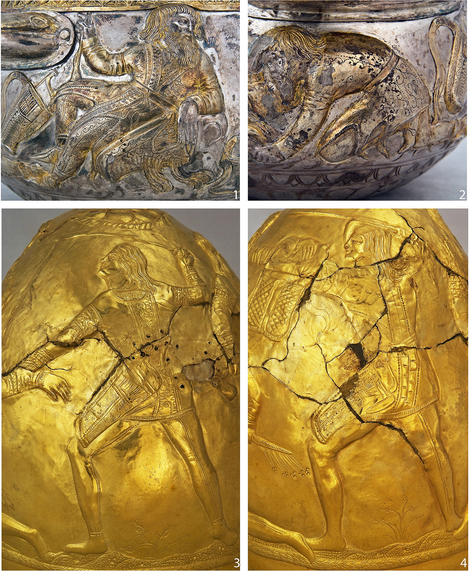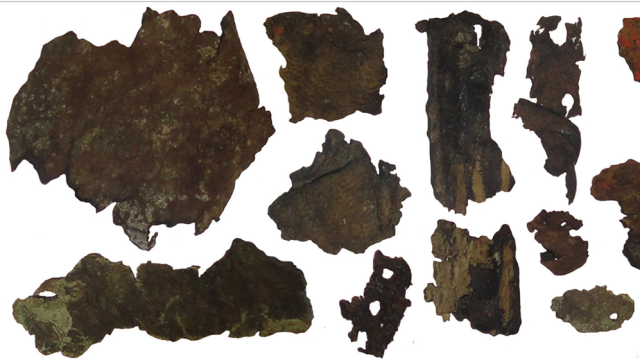Scythians in modern-day Ukraine made leather out of human skin, a team of researchers has determined, likely as a macabre trophy item. The discovery affirms a claim by the ancient Greek historian Herodotus, who wrote extensively on the Scythian way of life.
In their work, the researchers use paleoproteomics to establish the sources of leather found on 14 different Scythian sites in southern Ukraine. The manifold sources—sheep, goat, cattle, horse, and yes, human—suggest that the equestrian steppe groups had a sophisticated knowledge of leatherworking. The team’s research was published last week in PLOS One.
The 45 leather samples (as well as two fur objects) were recovered from 18 Scythian burials. Many of the Scythian burials were in kurgans—ancient burial mounds found across eastern Europe. Some of the earliest evidence of horse domestication comes from in kurgans in Romania, Bulgaria, and Hungary.
Scythians were a genetically diverse group of nomads in the Eurasian steppe; they “served as the mobile bridge that linked the various sedentary societies of Europe and Asia,” according to the new paper. Scythians carried technologies, goods, and ideas between the continents.
The Scythians were described by Herodotus—sometimes through firsthand experience, but also through hearsay that likely traveled along trade routes from Eastern Asia—about 2,500 years ago. As documented by the Penn Museum, Herodotus described groups of people who were “one and all” able to “shoot from horseback,” with wagons as “the only houses that they possess.”
Their weapon of choice on foot was the battle-ax, Herodotus added, and archaeological evidence suggests that the Scythians adored their horses. As the researchers noted, Herodotus detailed stories of Scythians drinking the blood of the defeated, using severed heads as a bargaining token for booty, and sewing together scalps to make clothing. Importantly for this line of research, Herodotus also said that “Many too take off the skin, nails and all, from their dead enemies’ right hands, and make coverings for their quivers.”

The fur samples were identified as red fox and animals in the cat and squirrel families. The team could not get a taxonomic ID on 26% of the samples they identified, but the majority of the identified samples were likely goat (C. hircus.) The runner-up was sheep leather (~19%), while the other leather sources were roughly evenly represented in the samples. Two of the leather samples were from horse, and two—probably the reason you’re here—were human skin.
Scrutiny of the human leather made the team conclude that the skin bits were crafted on the top parts of their respective quivers; the rest of the quivers were made from animal leather. But even the animal leather quivers used a combination of different skins in their creation; the team posits that “each archer made their own quiver using the materials available at the moment.”
Scythians’ prowess on battlefields didn’t get in the way of a good time: the British Museum notes that various Greek authors documented a heavy drinking culture among the Scythians, and Herodotus even detailed a sort of ancient hot box (until now I didn’t know the word ‘weed’ shows up on the British Museum website).
New research continues to reshape the modern image of Scythians. They were much more than fearsome nomadic warriors. In 2021, a different team studied isotopes in tooth enamel from sites across Ukraine to understand the diet and range of ancient people. Those scientists concluded that only a small subset of people that lived in Scythian times were leading heavily nomadic lifestyles.
Even if only a few of these ancient warriors used human skin for their quivers, the work substantiates one of Herodotus’ more metal claims about the Scythians. Whether any of the rumored clothing sewn from scalps will ever be recovered is another matter.
